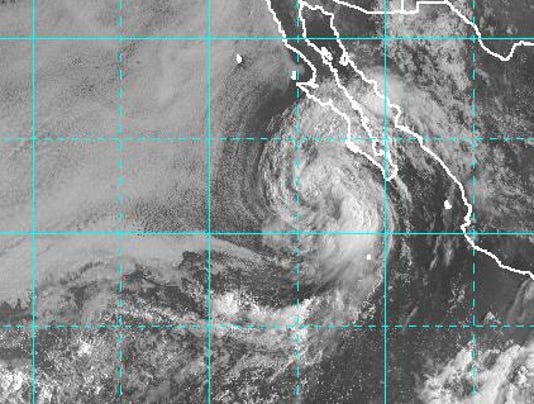
According to information from the Christian Science Monitor, the National Hurricane Center and NOAA is tracking Tropical Storm Ivo. There is a tropical storm warning for the southern portion of the Baja California peninsula in Mexico. It has been stated that a direct landfall isn't likely, but that heavy rain is expected from the storm. This was the map as of 5AM 24 August 2013.
![[Image of 5-day forecast of predicted track, and coastal areas under a warning or a watch]](http://www.nhc.noaa.gov/storm_graphics/EP09/refresh/EP0913W5+gif/145345W_sm.gif)
As of 8AM 24 August 2013, computer models have predicted a different storm track. Rather than to barely skirt the coast, the storm is predicted to be further away, and then downgrade to a tropical depression.
In addition to the maps provided, this article from USATODAY on 23 August 2013,
http://www.usatoday.com/story/weather/2013/08/23/tropical-storm-ivo-eastern-pacific-southwest/2691959/
it was predicted that flooding might come to the Southwest USA as a result of the storm. This was a day before.

Map of Tropical Storm Ivo, 23 August 2013. The storm is much closer to Cabo San Lucas,Mexico
Could flooding come as a result? It is a possibility. It could happen. It might not. According to the maps and computer models, the storm track predictions have changed, within hours. The storm could still shift.




